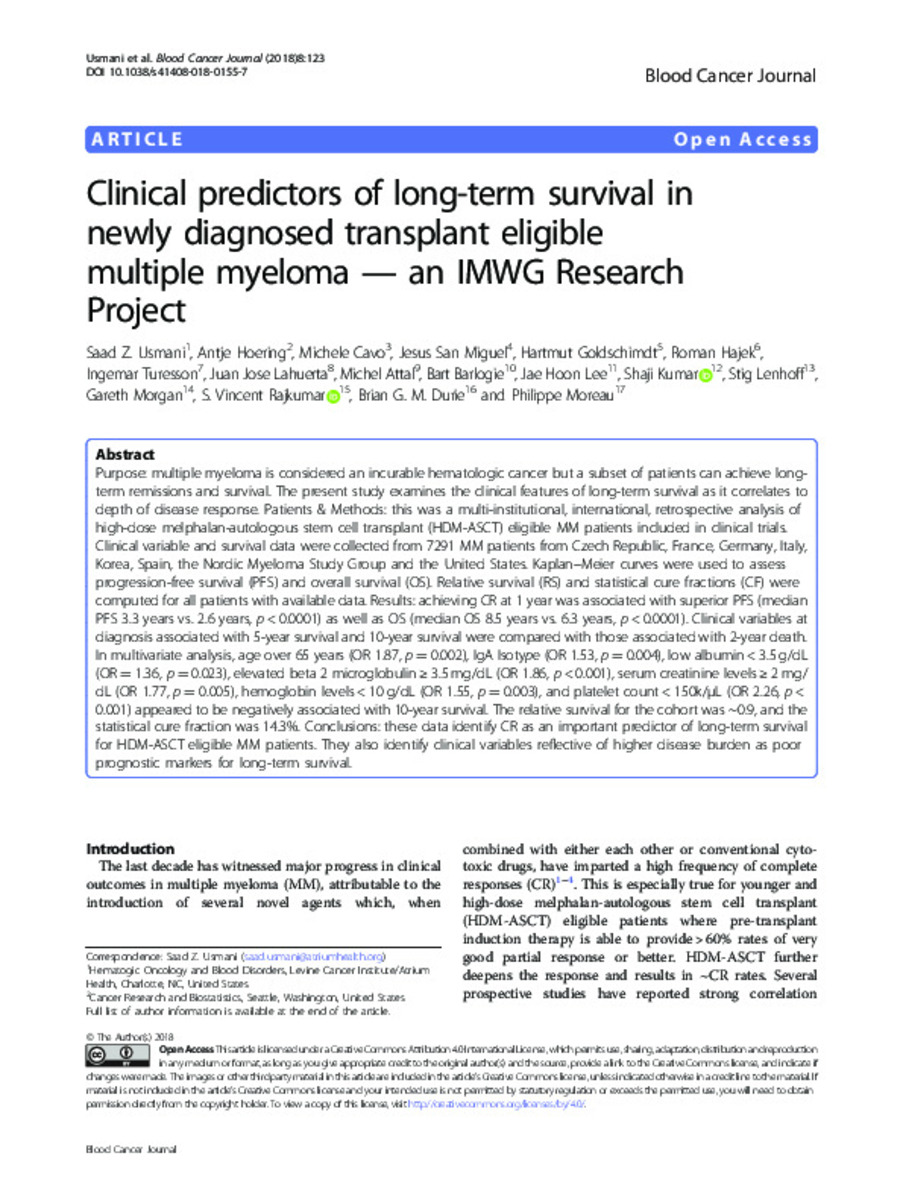Clinical predictors of long-term survival in newly diagnosed transplant eligible multiple myeloma - an IMWG Research Project
Keywords:
Multiple myeloma
Hematologic cancer
Long-term remissions
Publisher:
Springer Nature
Note:
s This article is licensed under a Creative Commons Attribution 4.0 International License, which permits use, sharing, adaptation, distribution and reproduction
in any medium or format, as long as you give appropriate credit to the original author(s) and the source, provide a link to the Creative Commons license, and indicate if
changes were made. The images or other third party material in this article are included in the article’s Creative Commons license, unless indicated otherwise in a credit line to the material. If
material is not included in the article’s Creative Commons license and your intended use is not permitted by statutory regulation or exceeds the permitted use, you will need to obtain
permission directly from the copyright holder.
Citation:
Usmani, S.Z. (Saad Z.); Hoering, A. (Antje); Cavo, M. (Michele); et al. "Clinical predictors of long-term survival in newly diagnosed transplant eligible multiple myeloma - an IMWG Research Project". Blood cancer journal. 8 (123), 2018,
Statistics and impact
0 citas en

0 citas en

Items in Dadun are protected by copyright, with all rights reserved, unless otherwise indicated.










